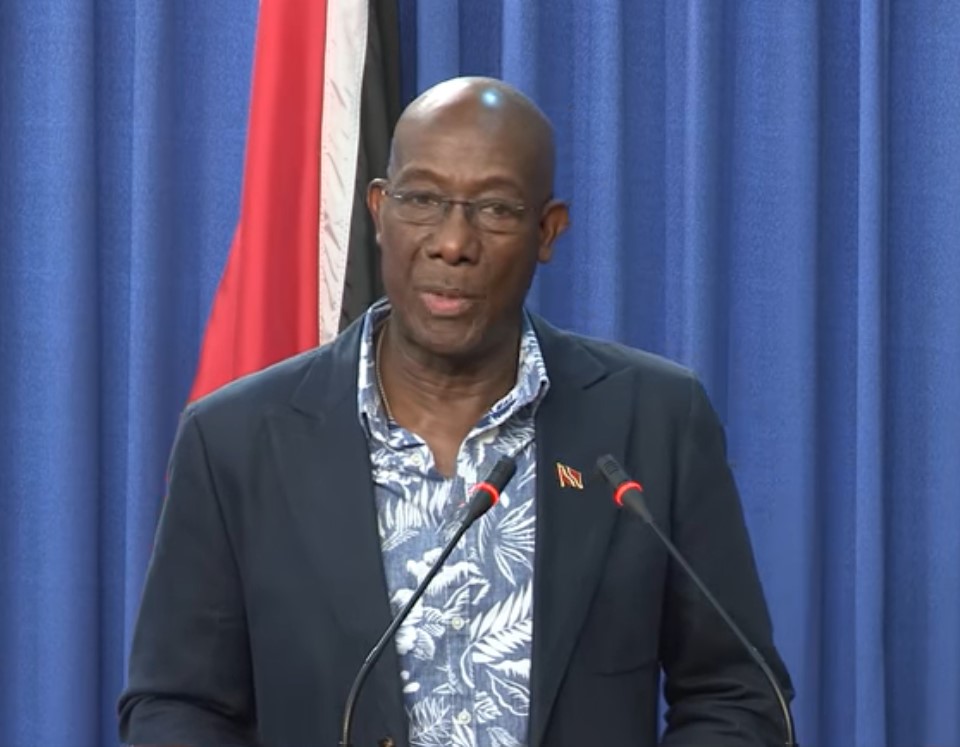Dominica taking no chances for 2022 Atlantic Hurricane Season
Dominica is taking no chances as it prepares for the 2022 Atlantic Hurricane Season, which is expected to be very stormy this year.

 Jimmit Regional Emergency Shelter, Dominica.[/caption]The projected hurricane season can be related to a number of climate conditions. La Nina, warmer-than-average sea surface temperatures in the Caribbean Sea and the Atlantic Ocean, and weaker tropical Atlantic trade winds are among these variables.Climate change has caused oceans to warm, resulting in more water being pumped into the atmosphere, making hurricanes more strong, and rising sea levels making storm surges more dangerous.Lessons LearnedDominica is on the frontline of climate change and is a target of natural disasters, mainly hurricanes and tropical storms. The nation does not produce greenhouse gases yet is among the primary victims in the battle against climate change.In 2017, Hurricane Maria damaged nearly every building, destroying nearly a quarter of them. Maria felled rainforests and knocked out the electricity, communications, and water supplies.Since then, the nation has been committed to building back better, with the aim to become the world's first climate-resilient country."Despite our disadvantages in Dominica, we are not leaving our fate up to chance, since 2017 we have taken decisive actions to realize our vision to build resilience within key sectors with support from local stakeholders as well regional, international agencies and organizations such as European Union," said Dr Roosevelt Skerrit, Prime Minister. The Prime Minister recently advised citizens to remain cautious and shared tips on how one can safeguard themselves and their communities in times of a natural disaster.[caption id="attachment_42984" align="aligncenter" width="100%"]
Jimmit Regional Emergency Shelter, Dominica.[/caption]The projected hurricane season can be related to a number of climate conditions. La Nina, warmer-than-average sea surface temperatures in the Caribbean Sea and the Atlantic Ocean, and weaker tropical Atlantic trade winds are among these variables.Climate change has caused oceans to warm, resulting in more water being pumped into the atmosphere, making hurricanes more strong, and rising sea levels making storm surges more dangerous.Lessons LearnedDominica is on the frontline of climate change and is a target of natural disasters, mainly hurricanes and tropical storms. The nation does not produce greenhouse gases yet is among the primary victims in the battle against climate change.In 2017, Hurricane Maria damaged nearly every building, destroying nearly a quarter of them. Maria felled rainforests and knocked out the electricity, communications, and water supplies.Since then, the nation has been committed to building back better, with the aim to become the world's first climate-resilient country."Despite our disadvantages in Dominica, we are not leaving our fate up to chance, since 2017 we have taken decisive actions to realize our vision to build resilience within key sectors with support from local stakeholders as well regional, international agencies and organizations such as European Union," said Dr Roosevelt Skerrit, Prime Minister. The Prime Minister recently advised citizens to remain cautious and shared tips on how one can safeguard themselves and their communities in times of a natural disaster.[caption id="attachment_42984" align="aligncenter" width="100%"] Housing Units in Dominica[/caption]"In the Dynamic Dominica that we are creating, all must have access to safe shelter; we are keeping true to our promise of 5,000 resilient homes for the people of Dominica. We do not ever want our citizens to revisit the despair resulting from displacement and homelessness due to Hurricane Maria," the Prime Minister said.In May 2022, the government of Dominica commissioned two regional emergency shelters to which 300 – 500 people in Castle Bruce and Jimmit will benefit. These self-contained facilities can house those affected by a severe storm for about two weeks.The shelters were built at the cost of EC$33 million with funding from the European Union and feature wide spaces to serve as dormitories, storage rooms, kitchens, washrooms, medical centres, laundry facilities, administrative offices and alternate water and power supplies.
Housing Units in Dominica[/caption]"In the Dynamic Dominica that we are creating, all must have access to safe shelter; we are keeping true to our promise of 5,000 resilient homes for the people of Dominica. We do not ever want our citizens to revisit the despair resulting from displacement and homelessness due to Hurricane Maria," the Prime Minister said.In May 2022, the government of Dominica commissioned two regional emergency shelters to which 300 – 500 people in Castle Bruce and Jimmit will benefit. These self-contained facilities can house those affected by a severe storm for about two weeks.The shelters were built at the cost of EC$33 million with funding from the European Union and feature wide spaces to serve as dormitories, storage rooms, kitchens, washrooms, medical centres, laundry facilities, administrative offices and alternate water and power supplies. The two shelters are part of the country's resilience journey to combat climate change and lay a sustainable development path to a Dynamic Dominica. "Hurricane Maria taught us unless we do this thing properly and we do it right we will be devastated each time because we really cannot prevent ourselves from being hit by a hurricane. But we are hoping that with our resilient building in terms of our infrastructure our roads, our bridges, our schools, and the health centres we can add some resilience and we can protect ourselves, our societies, and our communities from any such onslaught that may come in the future," said Reginald Austrie, Member of Parliament for the Cottage Constituency.Following Hurricane Maria, the government created the Climate Resilience Execution Agency for Dominica (CREAD). Its purpose is to lead and coordinate strategic initiatives across all sectors in the country with the goal of leading the climate resilience mission.Building Back BetterWhen Hurricane Maria hit Dominica in 2017, it caused damage worth an estimated 220 per cent of its GDP. The majority of the small island's roads, hospitals and housing sectors were also damaged. However, thanks to international, regional, and internal funds like that of the country's long-running Citizenship by Investment Programme, Dominica has managed to recover at great lengths.The Government of Dominica continues to build resilient climate infrastructure and develop strategies to strengthen the systems to boost capacity at the individual and community levels to more effectively respond to disaster impacts.For several decades, Dominica has used funds generated by its Citizenship by Investment (CBI) Programme to realise its ambitions towards constructing climate-resilient infrastructure that can withstand natural disasters, while creating lasting jobs in construction and tourism.
The two shelters are part of the country's resilience journey to combat climate change and lay a sustainable development path to a Dynamic Dominica. "Hurricane Maria taught us unless we do this thing properly and we do it right we will be devastated each time because we really cannot prevent ourselves from being hit by a hurricane. But we are hoping that with our resilient building in terms of our infrastructure our roads, our bridges, our schools, and the health centres we can add some resilience and we can protect ourselves, our societies, and our communities from any such onslaught that may come in the future," said Reginald Austrie, Member of Parliament for the Cottage Constituency.Following Hurricane Maria, the government created the Climate Resilience Execution Agency for Dominica (CREAD). Its purpose is to lead and coordinate strategic initiatives across all sectors in the country with the goal of leading the climate resilience mission.Building Back BetterWhen Hurricane Maria hit Dominica in 2017, it caused damage worth an estimated 220 per cent of its GDP. The majority of the small island's roads, hospitals and housing sectors were also damaged. However, thanks to international, regional, and internal funds like that of the country's long-running Citizenship by Investment Programme, Dominica has managed to recover at great lengths.The Government of Dominica continues to build resilient climate infrastructure and develop strategies to strengthen the systems to boost capacity at the individual and community levels to more effectively respond to disaster impacts.For several decades, Dominica has used funds generated by its Citizenship by Investment (CBI) Programme to realise its ambitions towards constructing climate-resilient infrastructure that can withstand natural disasters, while creating lasting jobs in construction and tourism. These projects include building 5000 climate-resilient homes, world-class hospitals, healthcare centres, and community centres. The nation has also invested and begun work on a Geothermal Power Plant in an effort to reduce its dependence on fossil fuels.[embed]https://youtu.be/_HKcq2U8gKM[/embed]"The Government of Dominica is utilising its Climate Resilient and Recovery Plan (CRRP) to overcome the damages and build new sustainable infrastructure to ensure durability against extreme natural disasters. Despite being small in size, Dominica is working hard to achieve the desired goal of becoming the world's first climate-resilient country," said Micha Rose Emmett, CEO of the world's leading government advisory and marketing firm, CS Global Partners."The beauty about Dominica's Citizenship by Investment Programme is that it really is a win-win solution for both the investor and the country as it enables the nation to grow sustainably without international aid and funds are used to build roads, schools, hospitals, and more," Emmett added.Established in 1993, Dominica's Citizenship by Investment Programme is one of the world's longest-running, the fastest and most secure programme of its kind. Dominica's Programme has helped vetted individuals and their families in becoming citizens of the nation once they either invest in a government fund or purchase pre-approved real estate properties.
These projects include building 5000 climate-resilient homes, world-class hospitals, healthcare centres, and community centres. The nation has also invested and begun work on a Geothermal Power Plant in an effort to reduce its dependence on fossil fuels.[embed]https://youtu.be/_HKcq2U8gKM[/embed]"The Government of Dominica is utilising its Climate Resilient and Recovery Plan (CRRP) to overcome the damages and build new sustainable infrastructure to ensure durability against extreme natural disasters. Despite being small in size, Dominica is working hard to achieve the desired goal of becoming the world's first climate-resilient country," said Micha Rose Emmett, CEO of the world's leading government advisory and marketing firm, CS Global Partners."The beauty about Dominica's Citizenship by Investment Programme is that it really is a win-win solution for both the investor and the country as it enables the nation to grow sustainably without international aid and funds are used to build roads, schools, hospitals, and more," Emmett added.Established in 1993, Dominica's Citizenship by Investment Programme is one of the world's longest-running, the fastest and most secure programme of its kind. Dominica's Programme has helped vetted individuals and their families in becoming citizens of the nation once they either invest in a government fund or purchase pre-approved real estate properties.
Author Profile
Monika Walker is a senior journalist specializing in regional and international politics, offering in-depth analysis on governance, diplomacy, and key global developments. With a degree in International Journalism, she is dedicated to amplifying underrepresented voices through factual reporting. She also covers world news across every genre, providing readers with balanced and timely insights that connect the Caribbean to global conversations.
Latest
- Belize: 57-year-old man shot dead in his sleep during early-...
-
US places Grenada under Level 2 “Exercise Increased Caution”... -
US Asylum Seekers Are Not Criminals: Understanding the diffe... -
Jamaica: Security forces kill 12 in first five days of 2026,... -
Antigua Carnival 2026: Registration opens for participants






